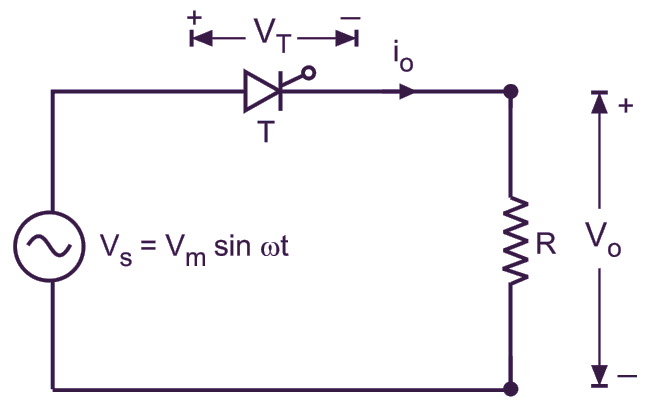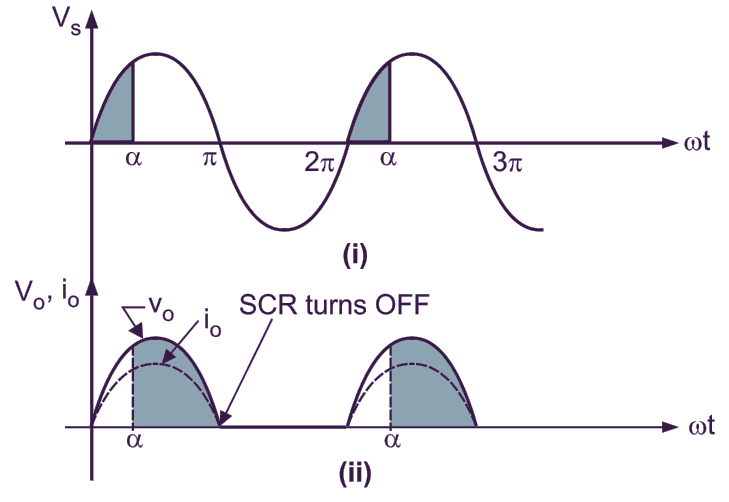When the input voltage is ac or line voltage, the anode current of an SCR goes to zero at the end of every positive half cycle and a reverse voltage appears across the device. The device is then automatically turned OFF due to the natural behavior of the line voltage. This commutation is called as natural commutation or line commutation. The turn-OFF method of an SCR, by applying the line (i.e. mains a.c.) voltage in which the SCR turns-OFF at every zero voltage, is called commutation of an SCR.
Circuit Detail of Natural Commutation (or Line Commutation)

Fig. 1: Natural commutation Circuit diagram.
Fig. 1 shows the circuit diagram of a single-phase controlled rectifier using SCR T. The SCR T is triggered into the positive half cycles of the supply voltage. The firing angle α of a triggered circuit can be controlled from 0° to 180°. The resistive load RL is connected in series with the SCR T.
Principle of Operation of Natural Commutation (or Line Commutation)
Suppose an SCR T is triggered at the firing angle α by the external trigger circuit and it is conducting the load current during the interval from α to (π – α). At the end of positive half cycle, i.e. when the anode current is zero and the SCR goes to reverse biased, the SCR automatically turns OFF due to natural behaviour of line (a.c.) voltage.

Fig. 2: Natural commutation Waveforms.
The input and output waveforms for natural commutation of SCR Fig. 2 (i) and (ii) respectively. Again during the positive half-cycle of line (a.c.) voltage, the SCR is triggered and the SCR is naturally turned OFF, when the anode current of an SCR goes to zero at the end of every positive half-cycle and the reverse voltage appears across it. The SCR can be naturally turn-OFF by applying the line (a.c.) voltage without using any trigger circuit. Thus, the natural reversal of a.c. supply voltage turns-OFF the conducting SCR.
Advantages of Natural Commutation (or Line Commutation)
The advantages of natural (or line) commutation of an SCR are as under:
- It is very simple.
- It is very reliable method.
Applications of Natural Commutation (or Line Commutation)
The applications of natural (i.e. line) commutation of an SCR are as under:
- It is used in a.c. to d.c. converters.
- It is used in a.c. regulators.
- It is used in cycloconverters.
- It can be used in light dimmers.
- It can be used in fan speed regulators